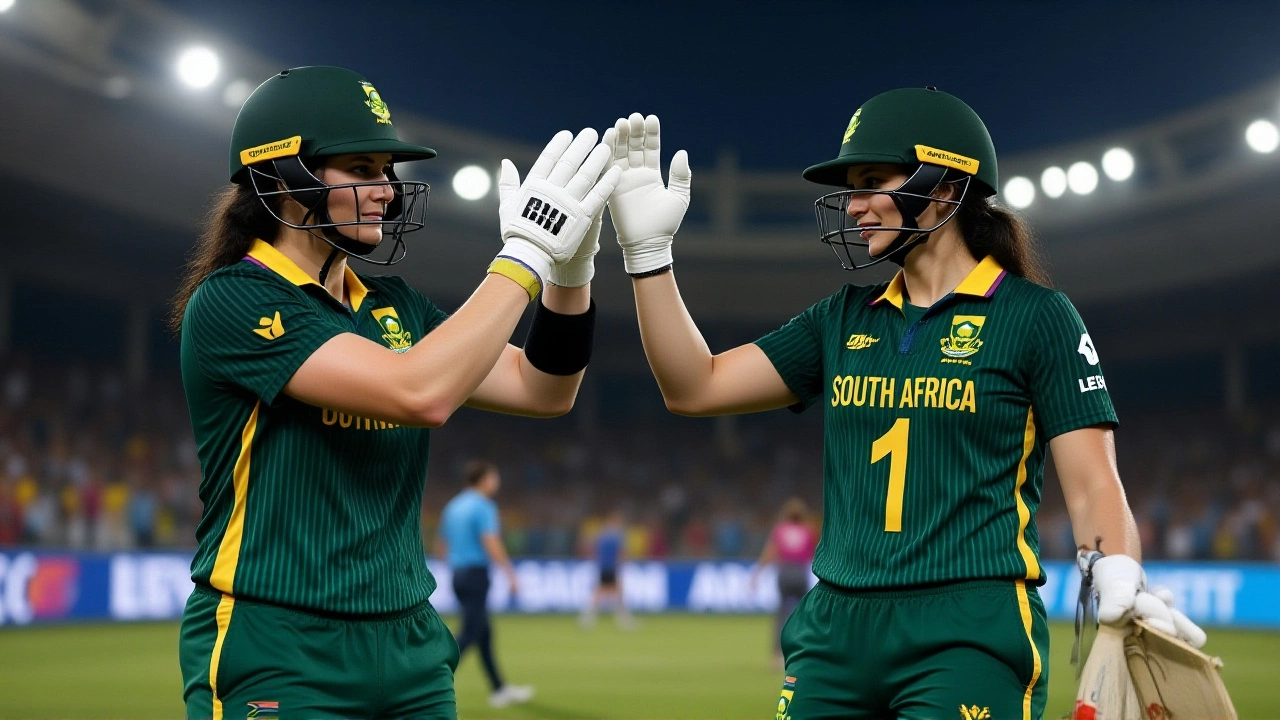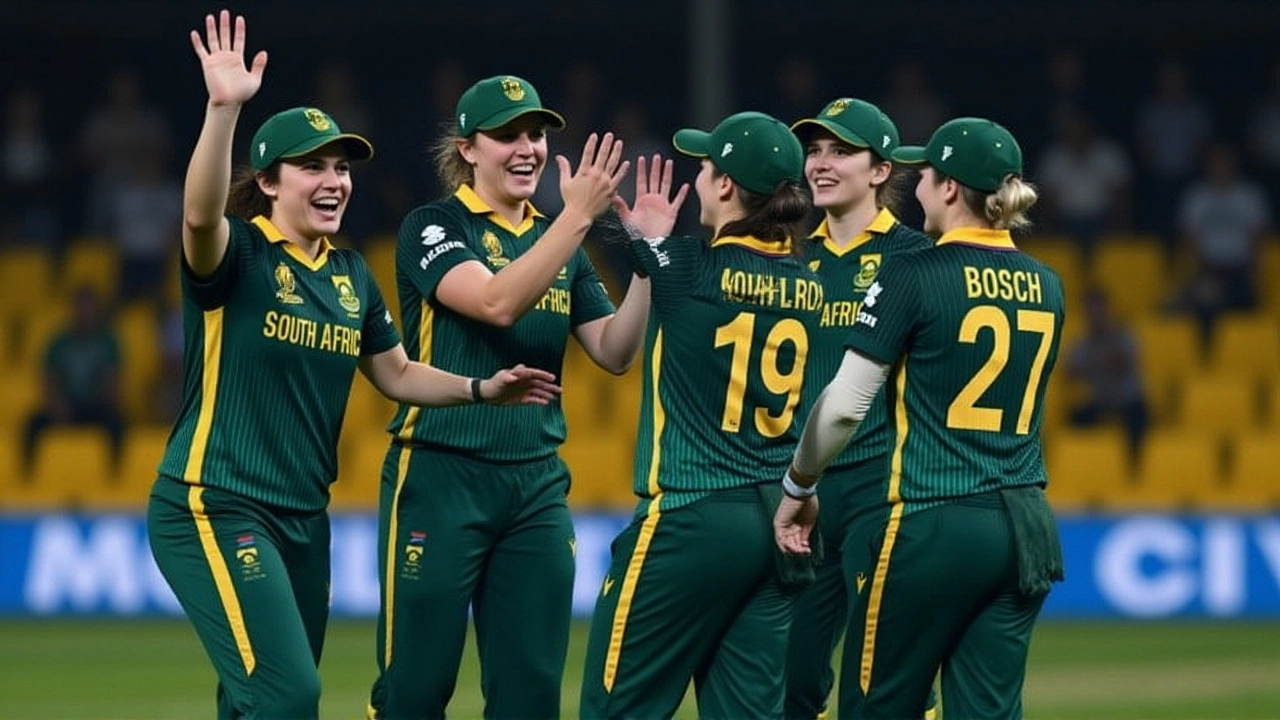When Laura Wolvaardt stepped up to bat on Wednesday, October 29, 2025, at the Barsapara Cricket Stadium in Guwahati, no one expected her to rewrite history. But by the time she walked off for 169 off just 143 balls — 20 boundaries, 4 sixes, not a single moment of panic — the South Africa Women's Cricket Team had not only beaten England by 125 runs, they’d shattered a 25-year barrier. This wasn’t just a win. It was their first-ever knockout victory in the ICC Women's Cricket World Cup 2025Guwahati, and it sent them to their first final. England, defending champions and favorites, were bowled out for 194. The dream of a third straight title? Gone. The Proteas? They’re not just here. They’re ready.
A Captain’s Masterpiece
Wolvaardt, 26, had carried the weight of South Africa’s past failures on her shoulders. Three semifinal exits — 2000, 2017, 2022 — had defined her team’s identity. But this time, after losing to England in the league stage, something shifted. She opened the innings with Tazmin Brits, who gave her 45 solid runs. Then, as the pressure mounted, Wolvaardt didn’t just survive — she dominated. Her innings wasn’t just about power. It was about precision. Every boundary came at the right moment. Every six was a statement. She reached her century in 89 balls. Her 10th ODI ton? A quiet, controlled explosion. By the time Chloe Tryon smashed 33 not out off 26, South Africa had posted 319 for 7 — their highest ever in a Women’s World Cup match. And they did it after being outplayed by England just weeks earlier. The turnaround? Pure psychology.
Kapp’s Night of Legend
England’s chase began with a nightmare. First ball. Heather Knight, their captain, gone. Second ball. Amy Jones, wicketkeeper and backbone, stumped. Third ball? Tammy Beaumont, their most consistent batter, caught at slip. 11 for 3. The crowd fell silent. Then came Marizanne Kapp, 34, calm as ever. In 8.3 overs, she took 5 for 20 — the most devastating spell in Women’s World Cup knockout history. Her first wicket? Knight. Her last? Sophie Ecclestone, England’s star spinner, caught at midwicket. Kapp’s 44 career World Cup wickets now eclipse Jhulan Goswami’s 43. That’s not just a record. That’s legacy. She didn’t just take wickets — she broke England’s spirit. "When someone gets a five-for and 169," said England coach Charlotte Edwards, "you’re not going to be on the winning side too many times."
The Turning Point
What made this win different? It wasn’t just the runs or the wickets. It was the belief. South Africa had spent years being the team that came close. They’d lost to Australia in 2022 by 3 runs in a semifinal. They’d choked under pressure. But this time, they didn’t flinch. When England fought back through Nat Sciver-Brunt’s 64 and Alice Capsey’s 50, South Africa didn’t panic. Ayabonga Khaka struck at the perfect moment. Shabnim Ismail kept the pressure on. Even the fielding — sharp, aggressive, flawless — felt like a new team. The Barsapara Cricket Stadium, packed with 40,000 fans under clear Assam skies, roared not just for the win, but for the arrival of a new force.
What’s Next? The Final Awaits
South Africa now waits for Thursday’s second semifinal between India Women's Cricket Team and Australia Women's Cricket Team. A final against Australia? That’s the ultimate test. Australia have won seven of the last eight World Cups. But South Africa aren’t intimidated anymore. Wolvaardt has proven she can carry a team. Kapp has proven she can end one. The Proteas have gone from underdogs to contenders in a single, stunning performance. This isn’t just about reaching a final. It’s about rewriting what’s possible for women’s cricket in Africa.

Historical Context: From Near Misses to National Pride
Before this match, South Africa’s World Cup story was defined by heartbreak. In 2000, they lost to Australia by 7 wickets in the semis. In 2017, they were edged out by England by 2 wickets in a tense, rain-affected semifinal. In 2022, they lost to Australia by just 3 runs — the narrowest margin in World Cup semifinal history. Each time, the narrative was the same: "They’re so close, but not quite." This time, they didn’t just close the gap. They obliterated it. And they did it against the team that had beaten them in the league stage. That’s the mark of a true champion team — not just talent, but transformation.
Expert Insight: Why This Changes Everything
"This is the most significant win in South African women’s cricket since the 1997 World Cup," said former Proteas captain Mignon du Preez. "It proves that with consistent leadership, tactical discipline, and belief, teams from outside the traditional powerhouses can compete at the highest level. Wolvaardt didn’t just score runs — she changed the culture. Kapp didn’t just take wickets — she became a symbol of resilience. This team now has a new identity. They’re not the bridesmaids anymore. They’re the queens."
Frequently Asked Questions
How did Laura Wolvaardt’s 169 rank in Women’s World Cup history?
Wolvaardt’s 169 is the third-highest individual score in Women’s World Cup knockout matches, behind only Belinda Clark’s 229* (1997) and Charlotte Edwards’ 177* (2005). It’s also the second-highest score by a captain in World Cup history. Her innings included 20 fours and 4 sixes, with a strike rate of 118.18 — exceptional for a high-pressure semifinal. This was her 10th ODI century, cementing her status as one of the top five batters in women’s cricket today.
Why is Marizanne Kapp’s 5 for 20 so historic?
Kapp’s 5 for 20 is the best bowling figures by any bowler in a Women’s World Cup knockout match. It also pushed her career World Cup wicket tally to 44, surpassing India’s Jhulan Goswami (43) to become the tournament’s all-time leading wicket-taker. Her previous five-wicket haul came in 2017 against Pakistan. At 34, she’s not just a veteran — she’s a phenomenon, combining swing, seam, and unflappable composure under pressure.
What does this mean for women’s cricket in Africa?
South Africa’s final appearance is a watershed moment for African cricket. No African nation has ever reached a Women’s World Cup final. This win inspires grassroots programs across the continent, especially in countries like Zimbabwe, Kenya, and Namibia, where women’s cricket is growing but underfunded. It proves that with proper support, teams outside the traditional powerhouses can compete — and win — on the biggest stage.
How did England collapse so badly after winning the league stage?
England’s top order, usually their strength, crumbled under pressure. They lost three wickets for 11 runs inside the first 12 balls — the worst start in a World Cup semifinal since 2009. Captain Heather Knight’s dismissal on the first ball was a psychological blow. While Sciver-Brunt and Capsey fought, the middle order failed to rebuild. South Africa’s fielding, particularly at the death, was flawless. England’s spinners, including Ecclestone, couldn’t contain Wolvaardt — and that was the difference.
Who will South Africa face in the final?
South Africa will face the winner of the second semifinal between India and Australia, played on Thursday, October 30, 2025. Australia are heavy favorites — they’ve won seven of the last eight World Cups. But South Africa now have momentum, confidence, and a captain who thrives under pressure. If they face India, it’ll be a historic clash between two teams breaking new ground. Either way, the final will be the most-watched women’s cricket match in African history.
Is this the start of a new era in women’s cricket?
Absolutely. For too long, the Women’s World Cup has been dominated by Australia and England. But this match proves the gap is closing. South Africa’s blend of youth and experience — Wolvaardt at 26, Kapp at 34 — shows leadership doesn’t need to come from one generation. Their win, combined with India’s rise, signals a shift. The future of women’s cricket isn’t just in the traditional powerhouses. It’s in the passion of teams that refused to give up.
